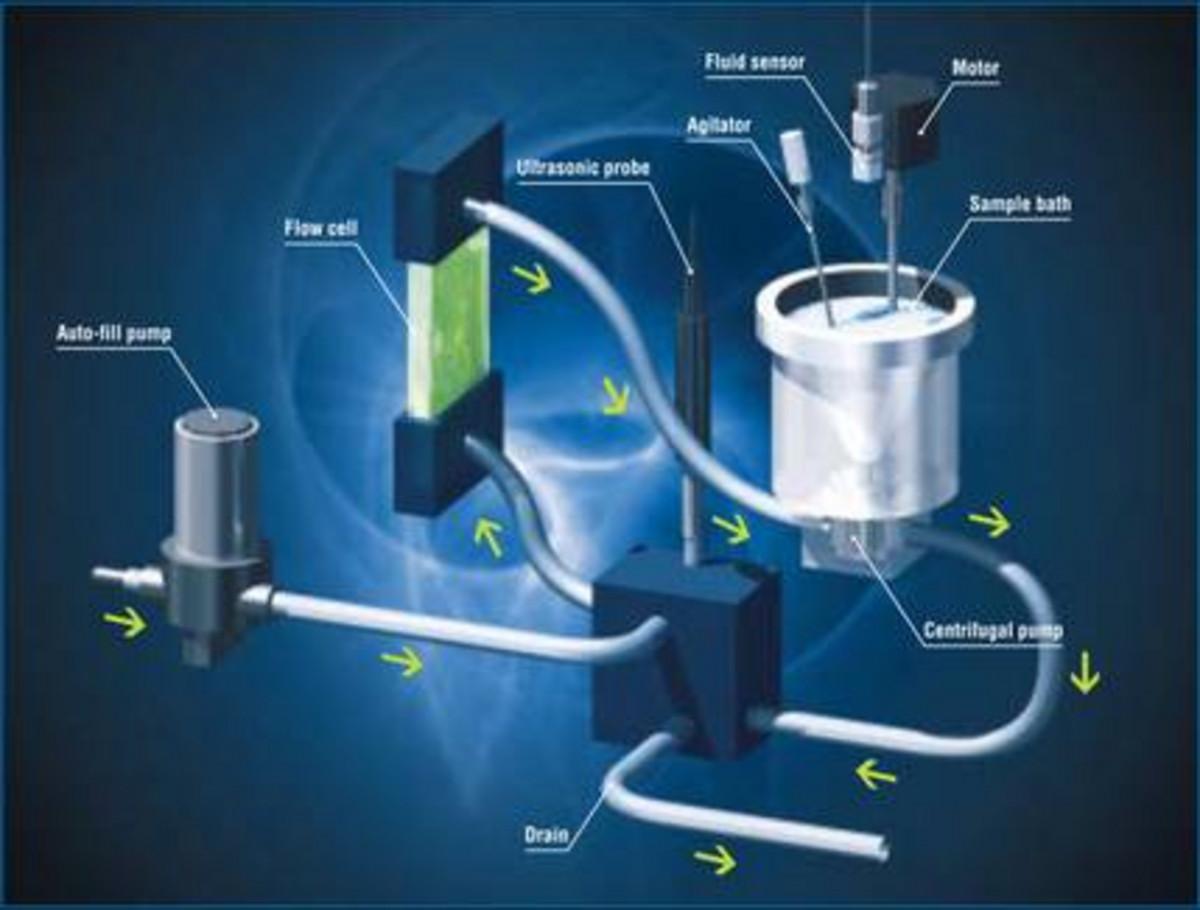


Typical laser diffraction experimental setup
Light scattering has long been used to investigate the size of various objects. Gustav Mie (he of the Mie Scattering Theory) studied gold nanoparticles like those in the image below as part of his doctoral thesis. Previously confined to custom-built setups in labs, several innovations took laser diffraction from the darkroom to research labs and production floors across the world.
So how does laser diffraction work? At its very most basic, laser diffraction is about the relationship between particle size and the angle and intensity of scattered light. Light scatters more intensely and at smaller angles off of large particles than small particles. Every analyzer, from the very first commercial prototype to the state of the art LA-960 utilizes this principle. In fact, the analyzer itself does not measure particle size -- it measures the angle and intensity of light scattered from the particles in your sample. That information is then passed to an algorithm designed to use Mie Scattering Theory which transforms the scattered light data into particle size information.
Both the hardware and software required to make a particle size measurement have gone through many revisions in order to improve accuracy, precision, reliability, and ease of use. The LA-960 represents the tenth generation of HORIBA laser diffraction analyzers; each different and better than the last. Read on to discover what important factors go into making this measurement routine and trustworthy.
Four types of interaction between light and a surface
At the very heart of the laser diffraction technique is the relationship between light and surfaces (which can be freely interchanged with "particle" for our purposes). When light strikes a surface it is either
Diffraction is also known as "edge diffraction" as that is where it occurs. Refraction occurs as light changes angle traveling throught the particle.
We can obtain information about the size of a particle using the angle and intensity of scattered light. Diffracted and refracted light is useful for this purpose; absorbed and reflected light works against this purpose and must be taken into account during measurement and size calculation.
For particles larger than a certain size the vast majority of light is scattered by diffraction. The scattered light is at relatively high intensity and low angle for these larger particles. The "certain size" is determined as a multiple of the wavelength of light used for the measurement and typically approximated at 20 microns. Particles larger than this size communicate useful size information through diffraction and not refraction. This means the measurement will not benefit from the use of a refractive index to accurately interpret refracted light.
For particles smaller than 20 microns refracted light becomes increasingly important to calculate an accurate particle size. The scattered light is at relatively low intensity and wide angle for these smaller particles. The use of a refractive index and the Mie scattering theory directly affects accuracy in this size range. All HORIBA laser diffraction analyzers use the Mie scattering solution by default and allow the user to input custom refractive index values.
A simplified layout of the LA-960 optical bench. 1: Red wavelength laser diode for larger particles, 2: Blue LED for smaller particles, 3: Low angle detectors for larger particles, 4: Side and back angle detector arrays and smaller particles.
The basic workflow of a laser diffraction particle size analysis breaks down into two parts:
Measurement quality is all about the analyzer itself: quality of components, engineering refinement, and a fundamental design which reflects basic principles. The core technologies are all mature, but as with many things higher quality leads to superior performance. A typical laser diffraction optical system will include:
The LA-960V2 particle size analyzer represents the tenth generation laser diffraction instrument designed by HORIBA. Hundreds of refinements to the basic design have been included to improve performance and usability. These refinements include:
Acquiring the best possible scattered light data is the basis of any reliable size measurement. The "raw" scattered light data is then passed to the calculation algorithm where it will be transformed into a particle size distribution.
There are no results for this filter combination!
Laser Scattering Particle Size Distribution Analyzer
Laser Scattering Particle Size Distribution Analyzer
Do you have any questions or requests? Use this form to contact our specialists.